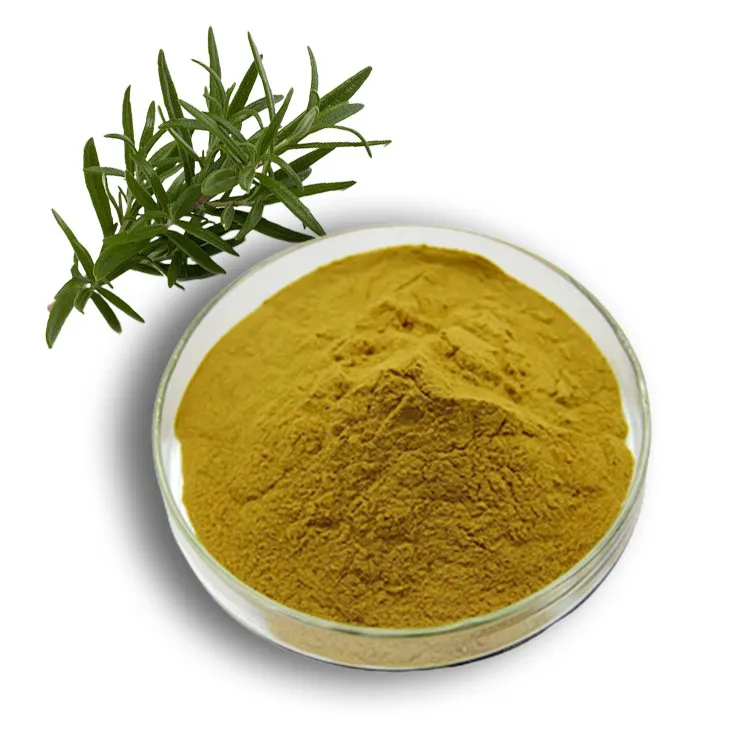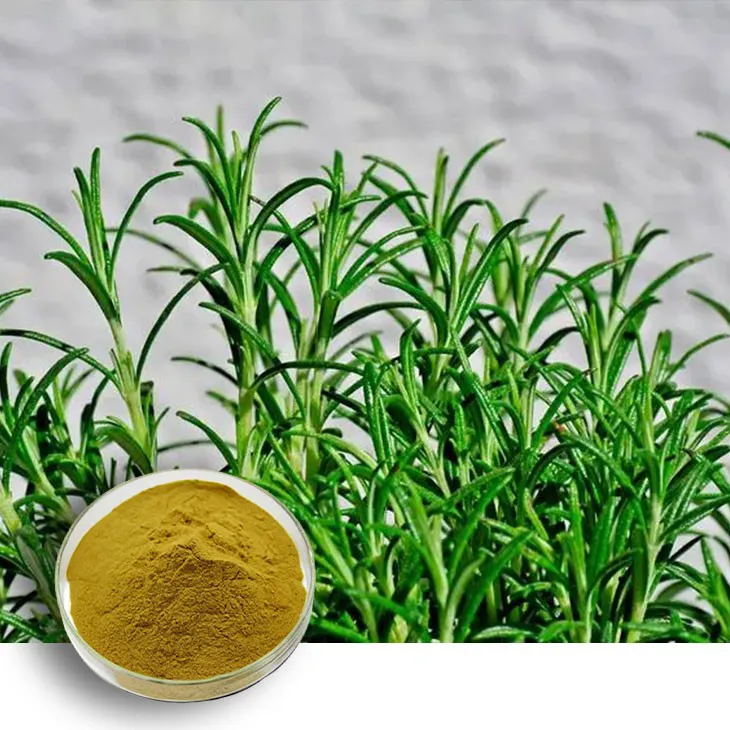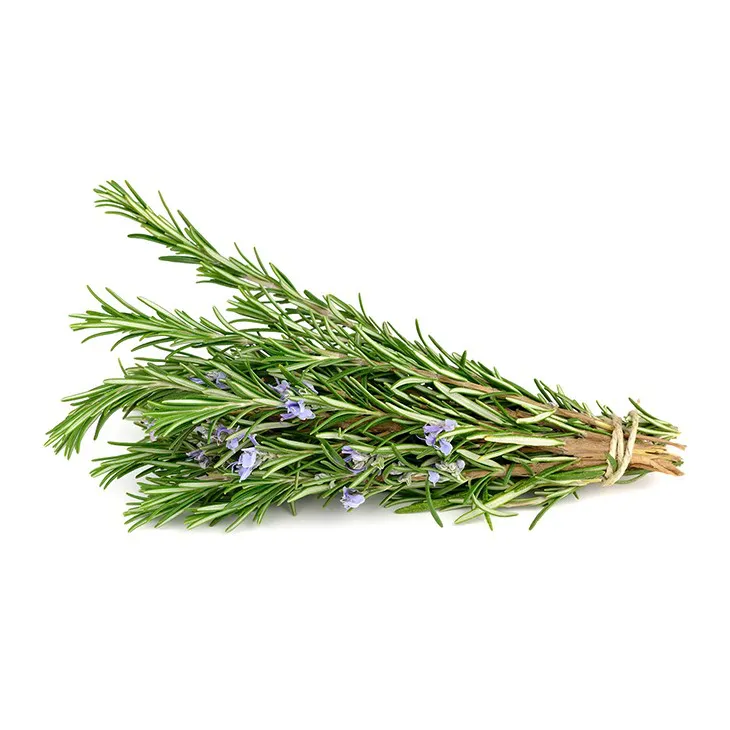- 0086-571-85302990
- sales@greenskybio.com
The best sources of natural rosemary extract.
2024-11-27

Native Habitats: The Starting Point
Rosemary is native to the Mediterranean region, which is often considered the prime source for high - quality Rosemary extract. The climate in this area, characterized by hot, dry summers and mild, wet winters, provides ideal conditions for rosemary growth. The soil in these regions is typically well - drained, which is crucial for rosemary as it is a plant that does not tolerate waterlogged conditions.
In countries like Spain, Italy, and Greece, rosemary grows abundantly in the wild and is also cultivated on a large scale. The natural environment in these areas imparts unique characteristics to the rosemary plants, resulting in extracts with distinct flavors and higher concentrations of beneficial compounds. For example, the rosemary growing along the coastal areas may have a slightly different chemical composition compared to those in the mountainous regions, due to differences in factors such as sunlight exposure, soil salinity, and air humidity.
Another important aspect of these native habitats is the lack of significant industrial pollution. A clean environment ensures that the rosemary plants are not exposed to harmful contaminants, which could otherwise affect the purity and quality of the extract. This is especially important for natural products that are often used in the food, cosmetic, and pharmaceutical industries where purity standards are high.

Genetic Diversity: A Source Factor
There are different strains of rosemary, each with its own genetic makeup. This genetic diversity plays a significant role in determining the quality of the extract. Some strains may be more rich in certain active compounds such as rosmarinic acid, carnosic acid, and antioxidants.
For instance, certain traditional strains in Italy have been found to have a higher concentration of carnosic acid. This compound is known for its antioxidant and antimicrobial properties, making the extract from these strains more valuable in applications such as food preservation and skincare products. On the other hand, some Spanish strains may be more abundant in volatile oils, which contribute to the characteristic aroma of Rosemary extract and are highly sought - after in the perfume and aromatherapy industries.
Genetic research is being carried out to better understand these differences and to selectively breed rosemary plants for specific desirable traits. However, it is important to preserve the natural genetic diversity as it may hold the key to future discoveries of new beneficial compounds or properties in Rosemary extract.

Post - Harvest Handling and Processing: Key to Quality
Once rosemary is harvested, proper handling and processing are crucial for obtaining the best extract. The first step is to ensure timely harvesting at the right stage of growth. Rosemary should be harvested when the plant has reached an optimal level of maturity. If harvested too early, the plants may not have developed sufficient amounts of the active compounds, while harvesting too late may lead to a decline in the quality of these compounds.
After harvesting, the rosemary needs to be carefully dried. Slow - drying at a low temperature is often preferred as it helps to preserve the volatile oils and other heat - sensitive compounds. High - temperature drying can cause the loss of these valuable components, reducing the quality of the extract. Some traditional methods involve drying the rosemary in shaded, well - ventilated areas to achieve a slow and gentle drying process.
Extraction methods also play a vital role. Solvent extraction is a commonly used method, where solvents such as ethanol or hexane are used to extract the active compounds from the dried rosemary. However, the choice of solvent and the extraction conditions need to be carefully controlled to ensure the purity and safety of the extract. Supercritical fluid extraction using carbon dioxide is another emerging method that offers the advantage of being more environmentally friendly and can produce a higher - quality extract with a more complete profile of active compounds.

Cost - Effectiveness and Quality Relationship
When considering the sources of rosemary extract, the cost - effectiveness in relation to quality is an important factor. Native habitats in the Mediterranean region may offer high - quality rosemary, but the cost of cultivation and harvesting in these areas can be relatively high due to factors such as land costs and labor expenses.
On the other hand, some regions outside the Mediterranean, such as parts of North America where rosemary is also grown, may have lower production costs. However, the quality of the extract may not be on par with that from the native habitats due to differences in environmental factors and genetic diversity. It is important to find a balance between cost and quality, depending on the specific application of the extract.
For example, in the food industry where large quantities of rosemary extract may be used for flavoring and preservation, a cost - effective source with acceptable quality may be sufficient. But in the high - end cosmetic or pharmaceutical industries where purity and specific compound concentrations are crucial, it may be worth paying a premium for extract sourced from the best - quality rosemary plants in their native habitats.
Another aspect to consider is the scale of production. Larger - scale producers may be able to achieve better cost - effectiveness through economies of scale, but they also need to ensure consistent quality control across their supply chain. Smaller producers, on the other hand, may focus on niche markets where the quality of the extract is more highly valued than cost - effectiveness.

Conclusion
In conclusion, the best sources of natural rosemary extract are influenced by multiple factors. The native habitats of rosemary in the Mediterranean region provide a natural advantage in terms of plant quality, but genetic diversity in different strains and proper post - harvest handling and processing are equally important. The cost - effectiveness in relation to quality also needs to be carefully considered depending on the end - use of the extract.
As the demand for natural rosemary extract continues to grow in various industries, it is essential to ensure sustainable sourcing practices that preserve the natural environment, genetic diversity, and quality of the rosemary plants. This will not only benefit the industries relying on this valuable extract but also contribute to the long - term conservation of this important plant species.
FAQ:
What are the native habitats of rosemary known for yielding high - quality extract?
Rosemary is native to the Mediterranean region. This area is known for yielding high - quality rosemary extract. The climate there, with its warm, sunny days and well - drained soil, provides ideal conditions for rosemary to grow. The plants are able to develop the compounds necessary for a top - notch extract in this natural environment.
How does genetic diversity in rosemary strains affect the extract?
Genetic diversity in rosemary strains can significantly impact the extract. Different genetic make - ups can lead to variations in the chemical composition of the plant. Some strains may have higher levels of certain active compounds like rosmarinic acid or antioxidants. This can result in extracts with different properties, such as enhanced antioxidant activity or better preservative qualities.
Why is proper post - harvest handling important for rosemary extract?
Proper post - harvest handling is crucial for rosemary extract. After harvesting, rosemary needs to be processed quickly to prevent the degradation of its active compounds. If not handled correctly, enzymes in the plant can start to break down the valuable substances. Also, proper drying and storage conditions are necessary to maintain the integrity of the plant material, ensuring that the resulting extract has the highest possible quality.
How can one evaluate the cost - effectiveness of different sources of rosemary extract?
To evaluate the cost - effectiveness of different sources of rosemary extract, one needs to consider several factors. Firstly, the quality of the extract in terms of its active compound content and purity should be assessed. A more expensive source may be cost - effective if it provides a much higher quality extract. Secondly, the yield of extract from a particular source per unit of raw material is important. Sources that yield more extract per amount of rosemary may be more cost - effective in the long run. Additionally, any additional costs associated with processing or handling from different sources should be factored in.
What are the characteristics of the best natural rosemary extract?
The best natural rosemary extract typically has a high content of active compounds such as rosmarinic acid, carnosic acid, and antioxidants. It should also have a pure composition, free from contaminants. In terms of its properties, it may have strong antioxidant, antimicrobial, and anti - inflammatory activities. It should be obtained from rosemary plants grown in optimal conditions and processed with proper techniques to ensure the highest quality.
Related literature
- The Chemical Composition and Bioactivity of Rosemary (Rosmarinus officinalis L.)"
- "Rosemary Extract: A Promising Natural Antioxidant for Food Preservation"
- "Genetic Diversity in Rosemary: Implications for Extract Quality"
- ▶ Hesperidin
- ▶ Citrus Bioflavonoids
- ▶ Plant Extract
- ▶ lycopene
- ▶ Diosmin
- ▶ Grape seed extract
- ▶ Sea buckthorn Juice Powder
- ▶ Fruit Juice Powder
- ▶ Hops Extract
- ▶ Artichoke Extract
- ▶ Mushroom extract
- ▶ Astaxanthin
- ▶ Green Tea Extract
- ▶ Curcumin
- ▶ Horse Chestnut Extract
- ▶ Other Product
- ▶ Boswellia Serrata Extract
- ▶ Resveratrol
- ▶ Marigold Extract
- ▶ Grape Leaf Extract
- ▶ New Product
- ▶ Aminolevulinic acid
- ▶ Cranberry Extract
- ▶ Red Yeast Rice
- ▶ Red Wine Extract
-
Hops Extract
2024-11-27
-
Eyebright Extract
2024-11-27
-
Chasteberry Extract
2024-11-27
-
Citrus bioflavonoids
2024-11-27
-
Phyllanthus Emblica Extract
2024-11-27
-
Cactus Extract
2024-11-27
-
Scutellaria Extract
2024-11-27
-
Nutmeg Extract
2024-11-27
-
Green Tea Extract
2024-11-27
-
Pine bark Extract Powder
2024-11-27





















